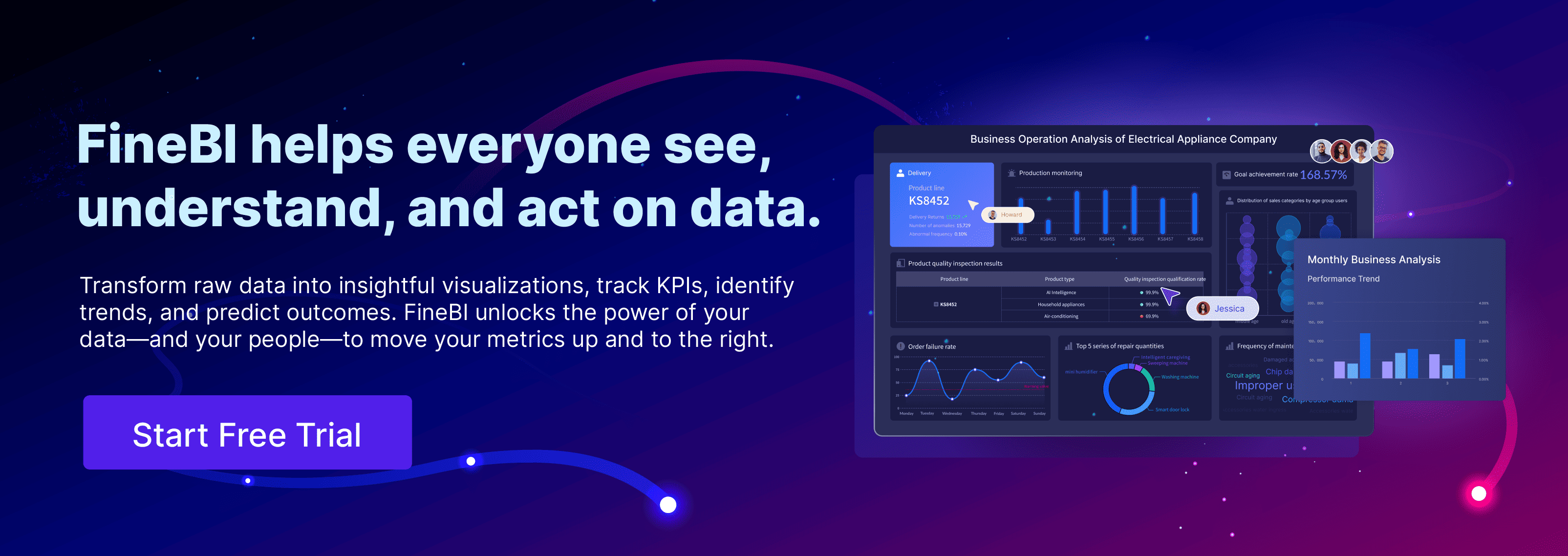An exceptional retail experience stands out through personalization, thoughtful store design, attentive customer service, innovative technology, and seamless convenience. These elements work together to create a memorable in-store experience and foster an emotional connection with guests. Studies show that personalization can double revenue growth for 48% of companies. Omnichannel approaches lead to purchase rates over twice as high as single-channel campaigns. When businesses consistently deliver a standout shopping experience, they see higher loyalty, stronger employee engagement, and increased impulse purchases.
Key Takeaways
- Personalization helps retailers connect with customers by using data to offer tailored products and services, making shoppers feel valued and increasing loyalty.
- Thoughtful store design and immersive experiences keep customers engaged longer, boosting sales and creating memorable visits.
- Knowledgeable and friendly staff improve customer satisfaction and build trust, which leads to repeat business and higher profits.
- Real-time technology and data integration allow stores to respond quickly to customer needs, improve operations, and offer seamless shopping across all channels.
- Convenience through easy navigation and fast checkout makes shopping simple and enjoyable, encouraging customers to return often.
Personalization in Retail Experience
Customer Insights
Retailers today rely on data to understand what customers want and how they behave. They collect information from many sources, such as point-of-sale systems, loyalty programs, and online activity. By using tools like FineBI, retailers can connect data from different channels and create a unified customer profile. This approach helps them see patterns in shopping habits, preferences, and even emotions through sentiment analysis.
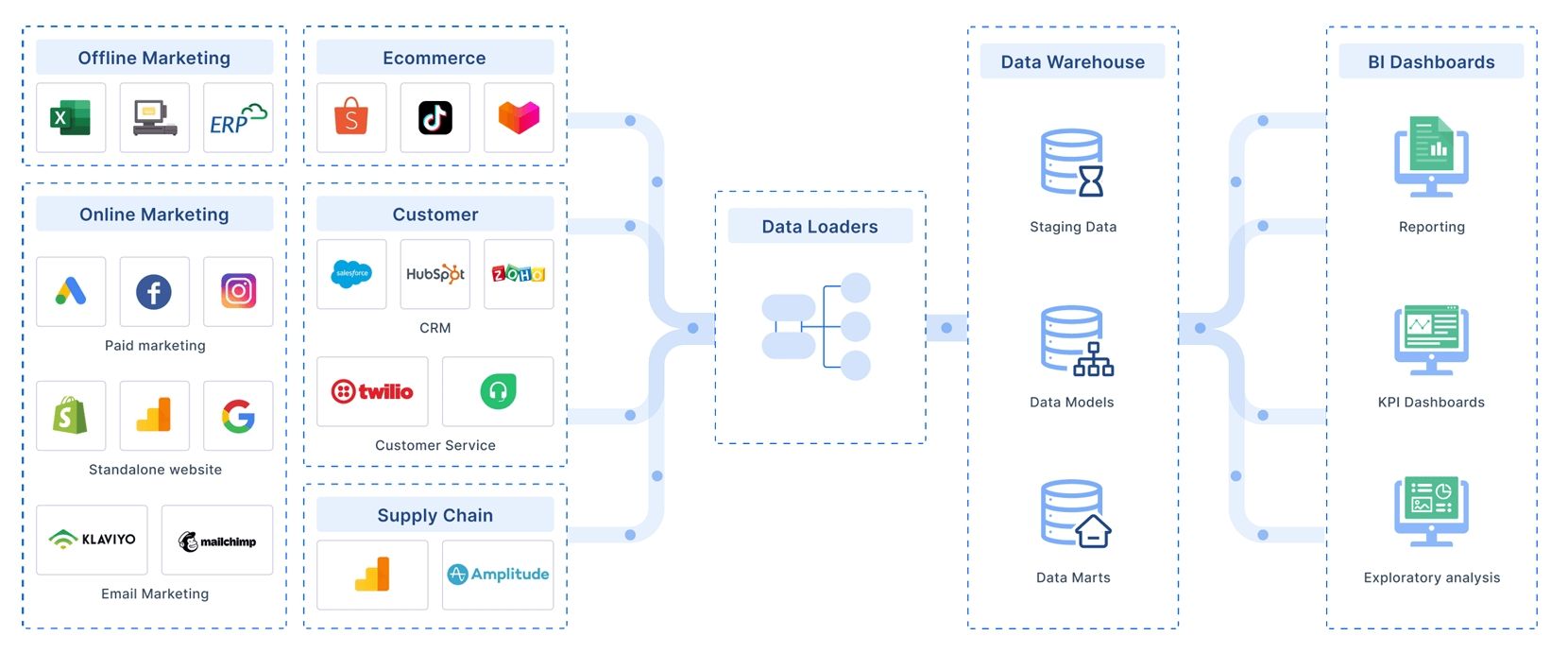
Retailers often segment customers into groups, such as loyal shoppers or bargain hunters. They use AI-driven models to analyze purchase history, demographics, and feedback. This segmentation allows them to target offers and recommendations more effectively. For example, a retailer might notice that a group of customers prefers eco-friendly products. The store can then highlight these items during their visits, increasing customer engagement and satisfaction.
Note: Combining online and offline data gives retailers a complete view of each customer. This integration leads to more relevant and timely interactions in-store.
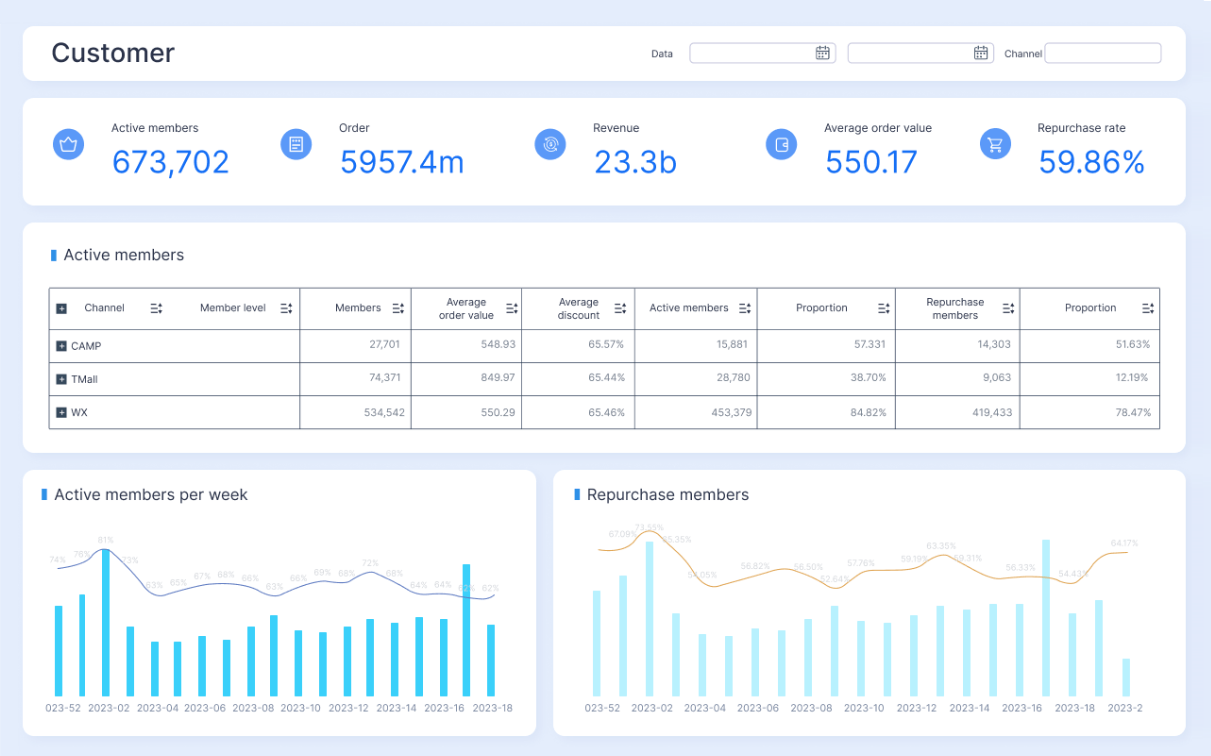
Tailored Interactions
Personalized services make customers feel valued. When staff greet customers by name or suggest products based on past purchases, the experience becomes memorable. Research shows that most customers expect this level of attention. In fact, 71% want personalized interactions, and many feel disappointed when they do not receive them.
Technology plays a key role in delivering tailored experiences. Digital kiosks, mobile apps, and self-checkout stations help customers find what they need quickly. FineBI enables retailers to analyze real-time data and adjust offers or product placements instantly. For example, if a customer often buys sports gear, the system can prompt staff to recommend new arrivals in that category.
Personalized services also extend to loyalty programs. By tracking customer preferences, retailers can offer customized discounts and rewards. This approach not only boosts customer experience but also encourages repeat visits and long-term loyalty.
Store Design & Experiential Retail Experience
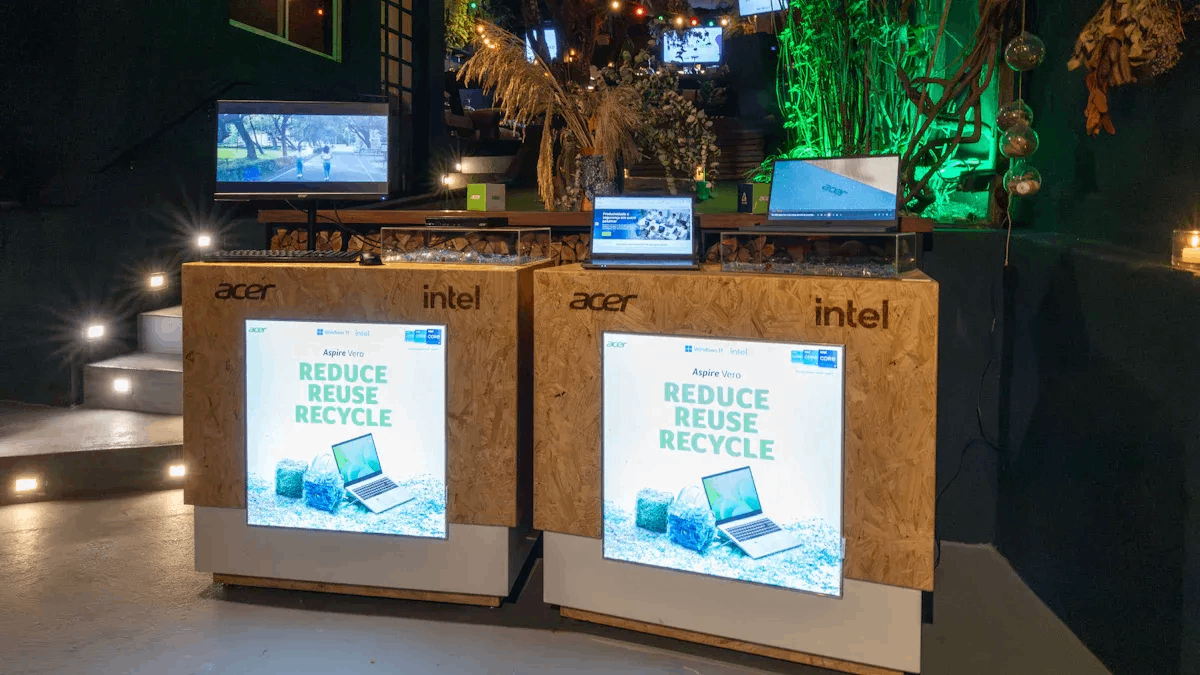
Layout & Visuals
A compelling store environment begins with thoughtful layout and visual merchandising. The way products are arranged and how customers move through a space can make or break the retail store experience. Retailers use video analytics to track customer flow, dwell time, and interactions. Heatmaps and pathmaps reveal which areas attract the most attention and which remain quiet. These insights help managers redesign layouts, place popular products in high-traffic zones, and reduce bottlenecks.
Dwell time measures how long shoppers stay in a store. Longer dwell times often mean customers feel engaged and comfortable, which leads to higher sales. Retailers can use A/B testing to compare different layouts and displays, measuring which designs increase both dwell time and sales conversions. Checkout area improvements, such as better line management, also reduce cart abandonment and improve the overall retail experience.
FineBI supports these efforts by analyzing customer movement and sales data in real time. Dashboards show which areas perform best and where changes are needed. Retailers can benchmark multiple locations, replicate successful retail spaces, and quickly adapt to customer behavior. This data-driven approach ensures every design decision supports a successful retail store experience.

Immersive Elements
Experiential retail thrives on immersive experiences that go beyond simple shopping. Interactive displays, smart mirrors, and augmented reality (AR) features allow customers to try products virtually or receive personalized recommendations. Shoppers spend about 20% more time in stores with these elements, increasing both satisfaction and purchase likelihood.
Sensory marketing uses scent, sound, lighting, and touch to create emotional connections. Curated music, signature scents, and tactile displays make shopping memorable and enjoyable. Events like live demos, workshops, and pop-up activations turn stores into destinations, encouraging longer visits and deeper engagement.
Designing experiential retail spaces now means blending digital and physical experiences. FineBI helps retailers measure the impact of these immersive elements by tracking engagement, dwell time, and sales. Managers can adjust strategies based on real-time feedback, ensuring each store delivers a unique and engaging retail experience.
Tip: Integrating interactive and sensory features not only boosts sales but also builds lasting loyalty by making every visit special.
Technology & Data Integration in Retail Experience
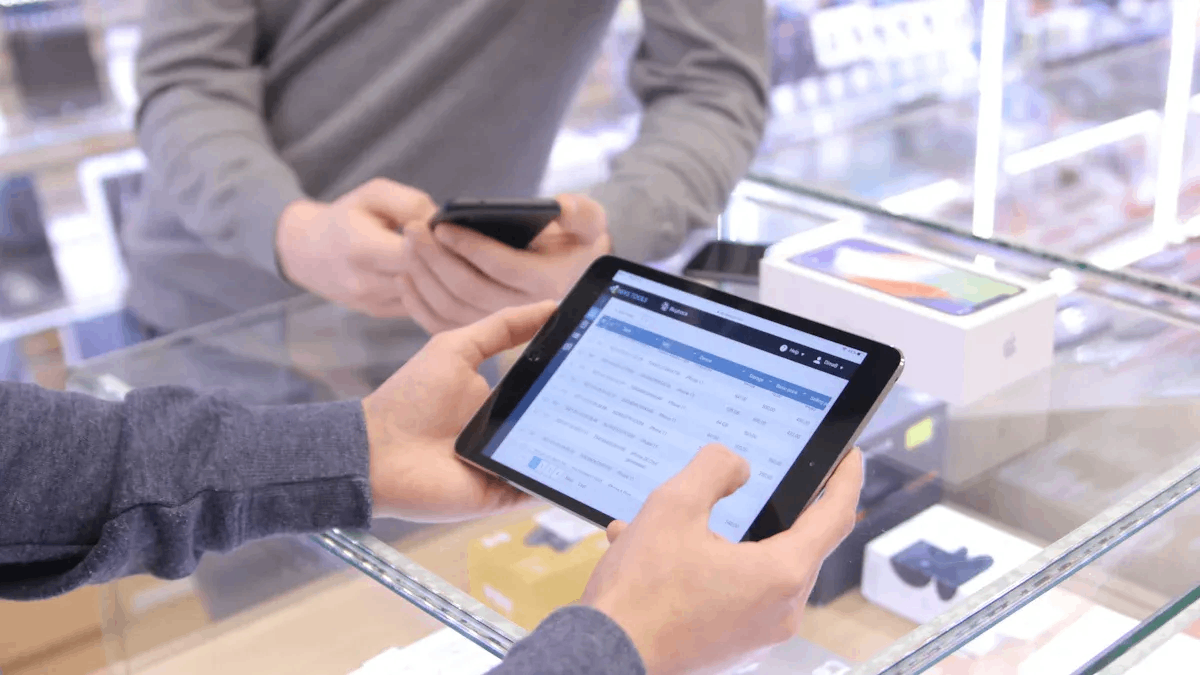
Real-Time Analytics
Technology now plays a central role in shaping the modern retail experience. Real-time analytics uses tools like IoT devices, AI, and machine learning to collect and process data instantly. These technologies help retailers understand what is happening in their stores at any moment. For customers, this means they can receive personalized product recommendations, dynamic pricing, and even skip checkout lines with seamless payment systems, similar to those in Amazon Go stores. Staff members benefit from real-time alerts about inventory levels, long queues, and safety issues. This allows them to act quickly, reduce wait times, and prevent stockouts.
Retailers use several technologies to support real-time analytics:
- Advanced point-of-sale (POS) systems that connect online and offline data.
- Smart shelves and RFID tags that track inventory.
- Cameras and sensors that monitor customer movement and store conditions.
- Cloud and edge computing for fast data processing.
These tools help retailers optimize store layouts, improve product placement, and enhance operational efficiency. Video analytics, for example, can turn security footage into insights for marketing and merchandising. Heatmaps show where customers spend the most time, guiding decisions about displays and promotions. Real-time analytics creates a smoother, more enjoyable retail experience for both shoppers and employees.
Below is a Sales Director Real-time Dashboard:
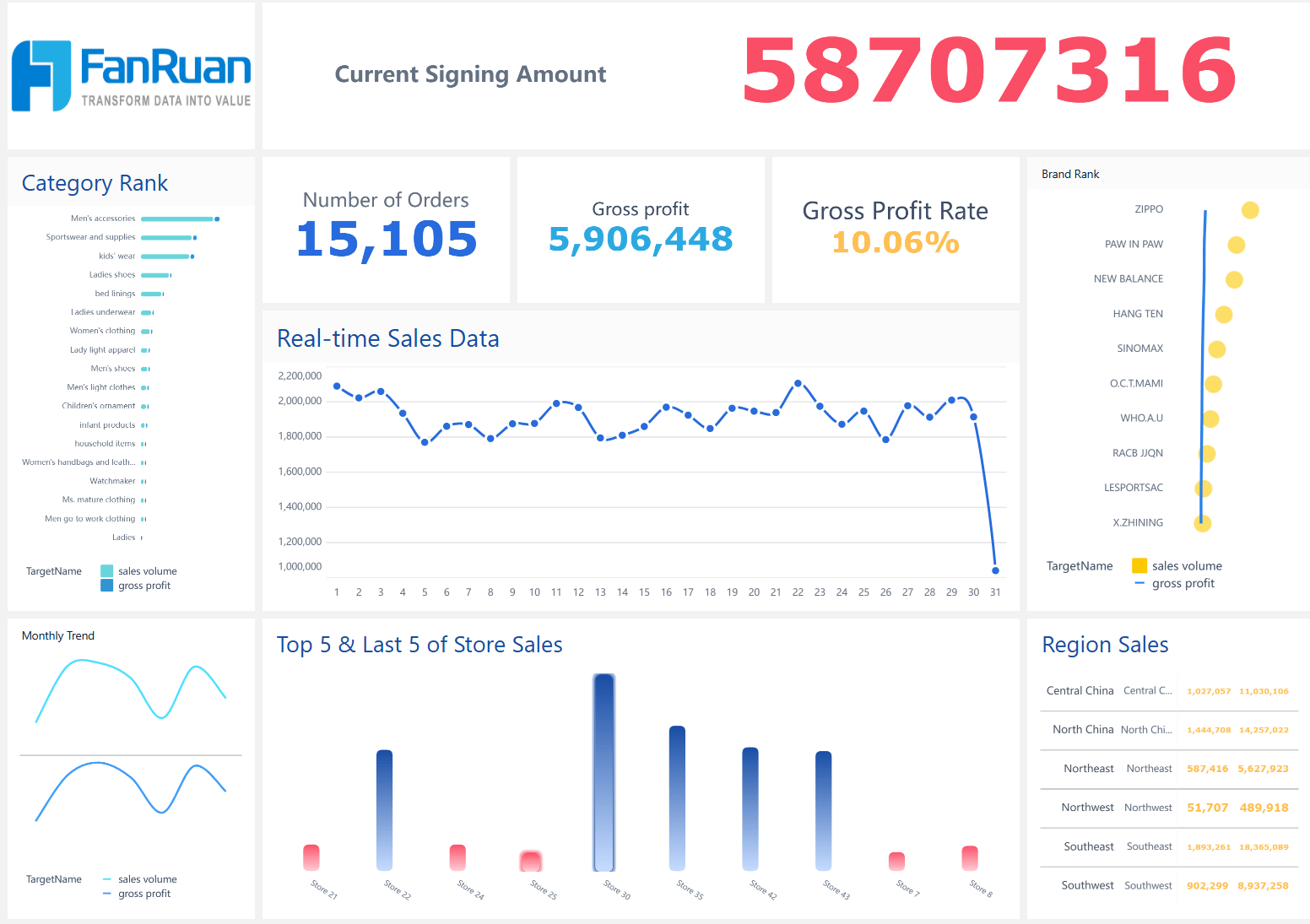
Omnichannel Experience
A seamless omnichannel experience connects all shopping channels—online, mobile, and in-store—into one unified journey. FineBI, a data analytics, helps retailers integrate data from every channel. This integration gives businesses a complete view of each customer and their preferences. Retailers can then offer consistent branding, personalized recommendations, and real-time inventory updates across all platforms.
Key features of an effective omnichannel retail experience include:
- Seamless channel integration with real-time communication between touchpoints.
- Unified customer data for personalized service.
- Consistent branding and messaging.
- Real-time inventory visibility.
- Cross-channel loyalty programs and support.
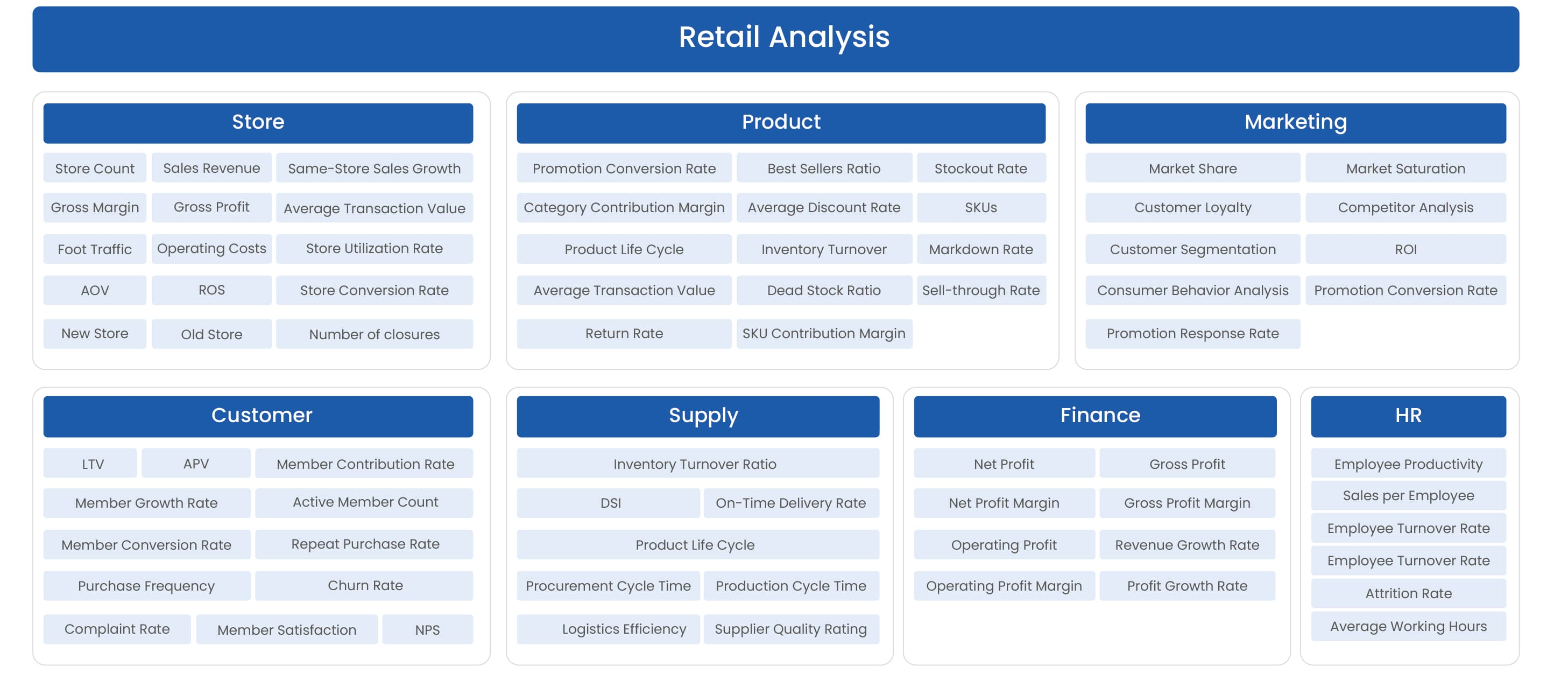
The benefits of omnichannel strategies are clear. The table below highlights some measurable outcomes:
| Benefit Category | Description | Measurable Outcomes |
|---|---|---|
| Enhanced Customer Satisfaction | Consistent experience and personalized offers | Higher satisfaction scores, fewer abandoned carts |
| Increased Sales and Revenue | Unified data enables cross-selling and upselling | Higher conversion rates, repeat purchases |
| Better Inventory Management | Real-time stock visibility and flexible fulfillment | Reduced stockouts, improved turnover |
| Improved Marketing Effectiveness | Targeted campaigns and better attribution | Higher engagement, improved ROI |
| Integration of E-commerce and Physical Retail | Click-and-collect and in-store pickup services | More foot traffic, increased in-store sales |
Retailers like Walgreens, IKEA, and Home Depot use apps and digital tools to connect online and in-store experiences. These efforts lead to higher customer engagement, increased sales, and improved convenience. By leveraging technology and data integration, retailers can deliver a retail experience that meets the needs of today’s shoppers.
Convenience in Retail Experience
Convenience stands as a cornerstone of a positive retail store experience. Shoppers value stores that make every step—from finding products to completing purchases—simple and stress-free. Retailers who focus on convenience see higher customer satisfaction and stronger loyalty.
Easy Navigation
Customers define convenience by how easily they can move through a store and find what they need. A study of 1,000 UK shoppers found that 76% consider convenience a key factor in choosing where to shop. Features such as clear signage, wide aisles, and well-organized shelves help customers navigate quickly. Store directories and digital kiosks further reduce confusion. When shoppers can locate products without frustration, they are more likely to enjoy the shopping experience and return in the future.
Retailers can use data solutions like FineBI to map the customer journey and identify friction points. By analyzing heatmaps and customer feedback, managers can spot areas where shoppers get stuck or leave without buying. Regular audits and journey mapping help stores update layouts and signage, ensuring a smooth retail store experience for everyone.
Tip: Mapping the entire customer journey, including all touchpoints, helps retailers understand where to improve navigation and boost satisfaction.
Fast Checkout
A seamless checkout experience is essential for customer retention. Long lines and slow transactions often cause shoppers to abandon their carts. Fast and user-friendly checkout processes increase sales conversions and reduce frustration. Many stores now offer self-checkout kiosks, mobile payment options, and click-and-collect services. These technologies speed up transactions by about 30% and let staff focus on helping customers.
Retailers who invest in faster point-of-sale systems or mobile checkout devices see higher purchase completion rates. Offering multiple payment methods, such as credit cards and mobile wallets, caters to different preferences. FineBI helps identify bottlenecks at checkout by analyzing transaction times and customer feedback. Managers can then adjust staffing or add more checkout stations to keep lines moving.
Convenience in the shopping experience includes easy navigation and a fast, seamless checkout experience. By removing obstacles and using data-driven insights, retailers create a retail store experience that keeps customers coming back.
Retailers who focus on creating meaningful guest experiences see lasting results. Key elements include seamless hybrid shopping, intuitive store design, exceptional customer service, and immersive technology. Platforms like FanRuan and FineBI help deliver a memorable guest experience by enabling real-time analytics, personalized promotions, and interactive displays. Consistently improving the in-store experience leads to greater loyalty, higher sales, and a strong competitive edge.
Click the banner below and upgrade the retail experience for your customer now!
Continue Reading about Retail Experience
What is Retail Industry Data Analysis and Why It Matters
Top Tools for Retail Data Analysis in 2025
FAQ

The Author
Lewis
Senior Data Analyst at FanRuan
Related Articles

Top 10 Supply Chain Visibility Tools for 2025
Compare the top 10 supply chain visibility tools for 2025 to enhance real-time tracking, integration, and predictive analytics for efficient operations.
Lewis
Oct 29, 2025

Carbon Emission Management Explained and Why It Matters
Carbon emission management involves tracking and reducing greenhouse gases to meet regulations, cut costs, and protect the environment.
Lewis
Oct 12, 2025

What is Green Manufacturing and Its Key Principles
Green manufacturing uses eco-friendly processes to boost energy efficiency, reduce waste, and promote sustainable materials in production.
Lewis
Oct 10, 2025
